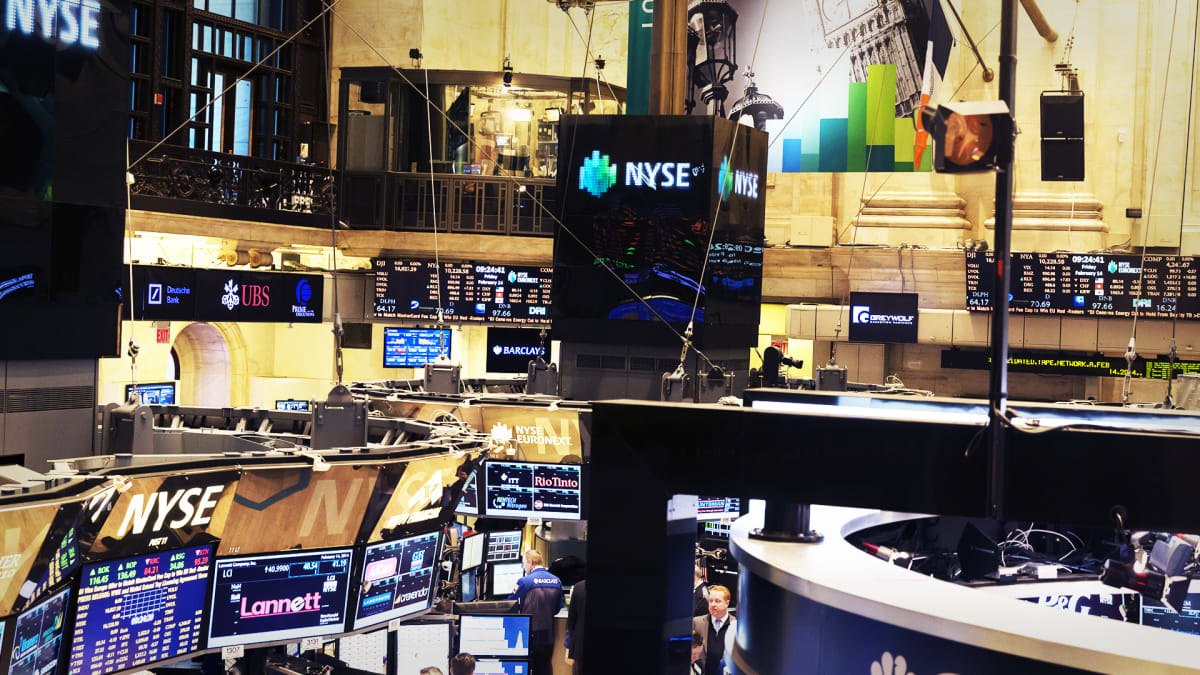
- January PCE inflation rises the most in seven months
- 2-year Treasury yields hit highest levels since 2007
- 10-year yields test 4% for first time since November
- US dollar jumps to fresh two-month high against its global peers
- Dow slumps into negative territory for the year
- S&P 500 opens at lowest since January 25
- Global stocks on pace for worst week of the year
U.S. stocks slumped to the lowest levels since late January Friday, while the dollar tested fresh two-month highs against its global peers, following a faster-than-expected reading of the Federal Reserve's preferred inflation gauge that has stoked bets on bigger near-term rate hikes.
The so-called core PCE Price index, a detailed measure of inflation that is closely tracked by Fed officials, jumped 0.6% in January, well ahead of Street forecasts of a 0.4% gain and the biggest monthly advance since July. The year-on-year measure was also higher, speeding to 4.7%, thanks in part to a big 1.8% uptick in personal spending -- the biggest driver of U.S. economic growth -- that dovetailed with the blowout January retail sales figures published last week.
The overall readings, which not only echoed a faster-than-expected reading for the more traditional CPI recorded in January but deepened concerns that inflation "stickiness" will linger in a still-growing economy until well into the first half of the year, has forced yet another re-set of rate hike expectations from the Fed.
Chris Zaccarelli, CIO for the Independent Advisor Alliance, said the data "reinforces the view that inflation is more persistent, and even though we now have much higher interest rates, it is much too soon for the Fed to say 'Mission Accomplished'."
"The Fed has much more work to do, and even if they only raise rates a couple more times, it is extremely unlikely that they will be cutting rates this year -- as was consensus and in market --based pricing as recently as a few weeks ago," he added.
The CME Group's FedWatch is now pricing in both a 30% chance of a 50 basis point rate hike next month in Washington, as well as a 32% chance that increases will extend into July, lifting the Fed Funds rate to a range of between 5.5% to 5.75%.
Cleveland Fed President Loretta Mester told CNBC prior to the data release that she sees the Fed Funds rate rising past 5% and "holding there for a time in order to get inflation on that sustainable downward path."
Benchmark 10-year Treasury note yields were marked 6 basis points higher on the session at 3.947% while 2-year note added 10 basis points to change hands at 4.809%, the highest since 2007.
The U.S. dollar index, which tracks the greenback against a basket of six global currencies, was marked 0.56% higher at 105.179.
That's likely to add further weight to a stock market that's facing the prospect of an earnings recession, following data showing fourth quarter profits fell 2.8% from last year and will likely contract by around 3.9% over the three months ending in June.
In the meantime, the CBOE Group's key VIX volatility gauge, is holding at elevated levels heading into today's session at 21.53 points, indicating traders are expecting a daily swing of around 52 points for the S&P 500 over the next thirty days.
On Wall Street, the S&P 500 fell 52 points in late-day trading in a move that would drag the benchmark to the lowest levels since late January and trim its year-to-date advance to around 2.8%.
The Dow Jones Industrial Average, meanwhile, fell 380 points, wiping out all of its gains for the year, while rate-sensitive tech stocks in the Nasdaq pulled that benchmark 232 points lower at the opening bell.







